프로그래머스
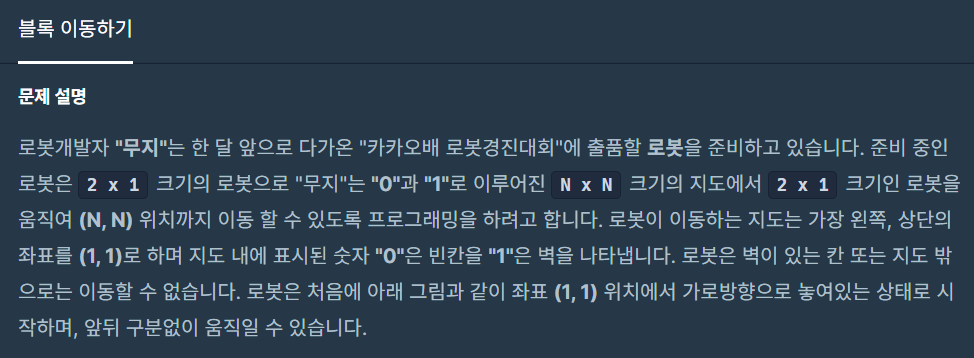
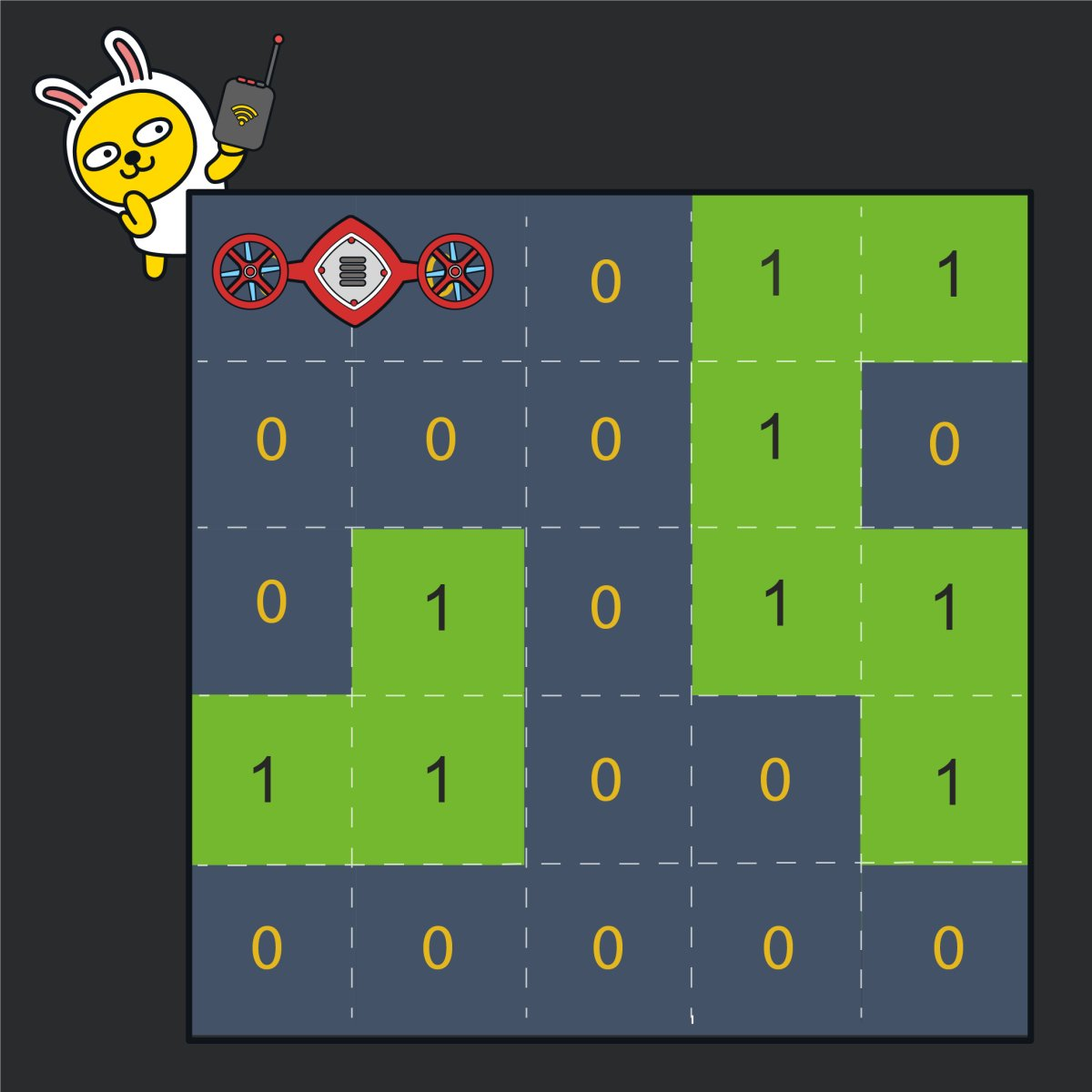

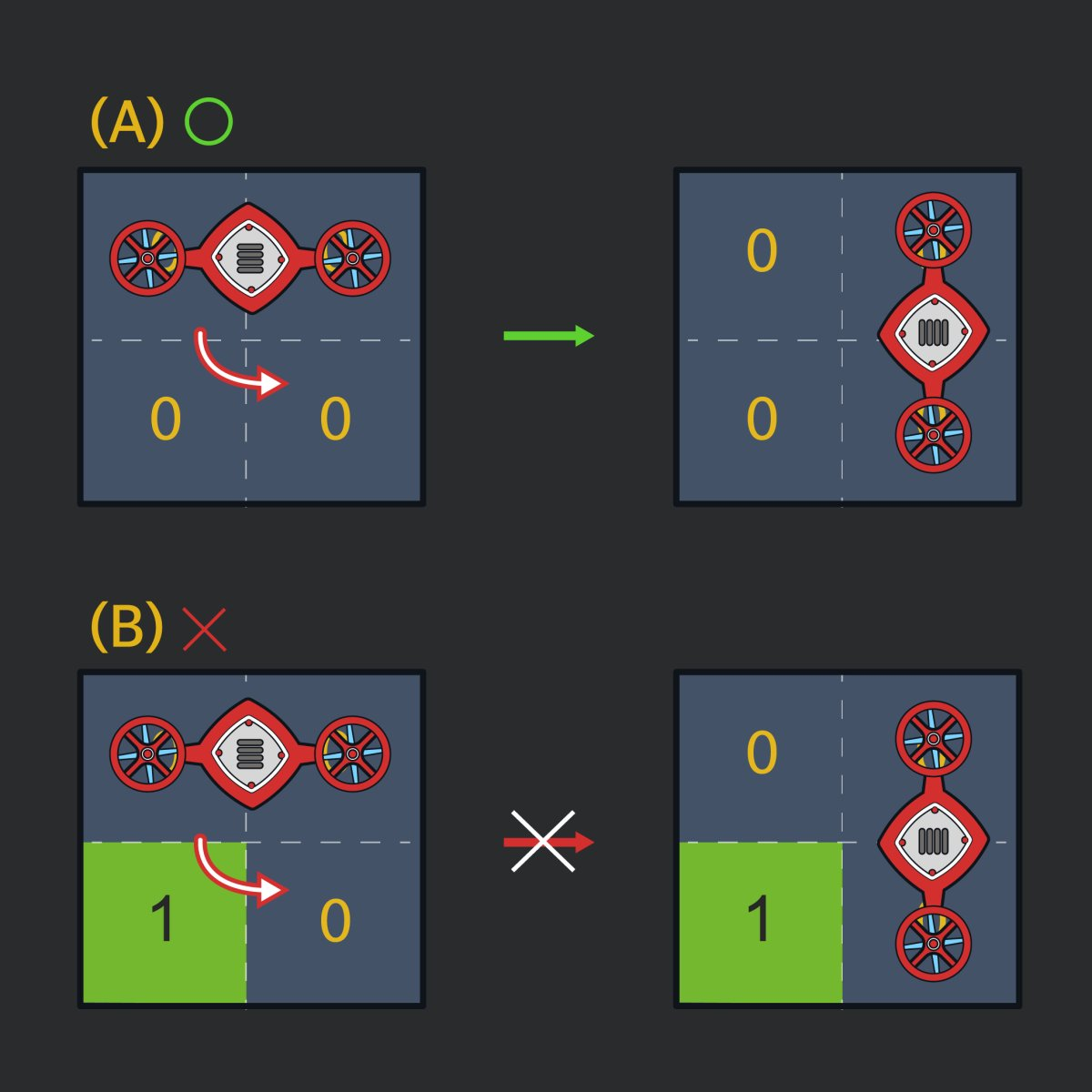
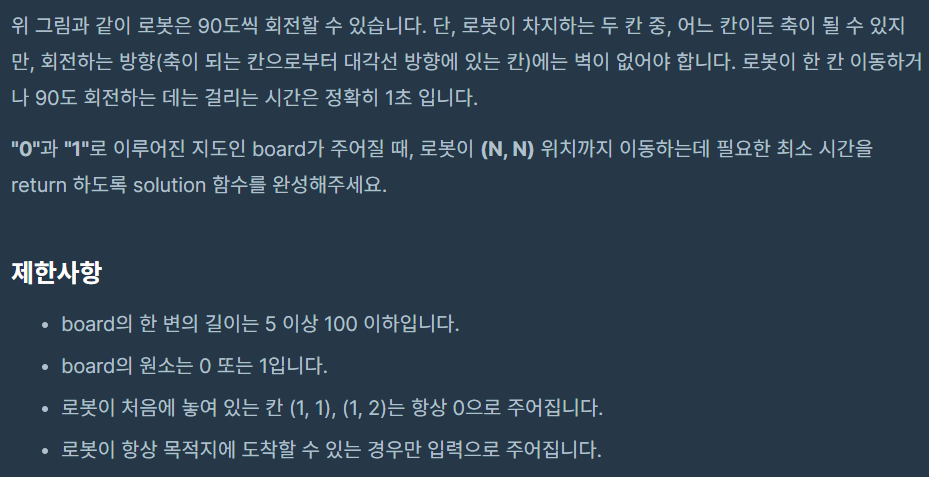
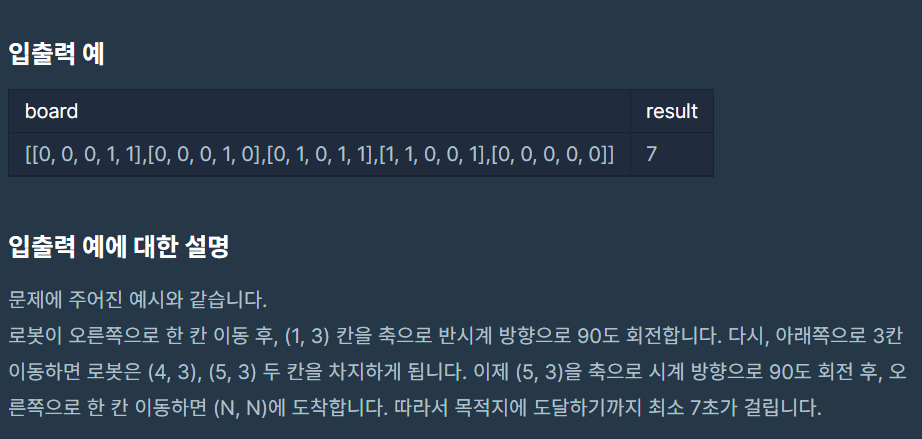
1. Python
from collections import deque
def get_next_pos(pos, board):
next_pos = []
pos = list(pos)
pos1_x, pos1_y, pos2_x, pos2_y = pos[0][0], pos[0][1], pos[1][0], pos[1][1]
dx = [-1, 1, 0, 0]
dy = [0, 0, -1, 1]
for i in range(4):
pos1_next_x, pos1_next_y, pos2_next_x, pos2_next_y = pos1_x + dx[i], pos1_y + dy[i], pos2_x + dx[i], pos2_y + dy[i]
if board[pos1_next_x][pos1_next_y] == 0 and board[pos2_next_x][pos2_next_y] == 0:
next_pos.append({(pos1_next_x, pos1_next_y), (pos2_next_x, pos2_next_y)})
if pos1_x == pos2_x:
for i in [-1, 1]:
if board[pos1_x + i][pos1_y] == 0 and board[pos2_x + i][pos2_y] == 0:
next_pos.append({(pos1_x, pos1_y), (pos1_x + i, pos1_y)})
next_pos.append({(pos2_x, pos2_y), (pos2_x + i, pos2_y)})
elif pos1_y == pos2_y:
for i in [-1, 1]:
if board[pos1_x][pos1_y + i] == 0 and board[pos2_x][pos2_y + i] == 0:
next_pos.append({(pos1_x, pos1_y), (pos1_x, pos1_y + i)})
next_pos.append({(pos2_x, pos2_y), (pos2_x, pos2_y + i)})
return next_pos
def solution(board):
n = len(board)
new_board = [[1] * (n + 2) for _ in range(n + 2)]
for i in range(n):
for j in range(n):
new_board[i + 1][j + 1] = board[i][j]
q = deque()
visited = []
pos = {(1, 1), (1, 2)}
q.append((pos, 0))
visited.append(pos)
while q:
pos, cost = q.popleft()
if (n, n) in pos:
return cost
for next_pos in get_next_pos(pos, new_board):
if next_pos not in visited:
q.append((next_pos, cost + 1))
visited.append(next_pos)
return 0
2. C++
#include <bits/stdc++.h>
using namespace std;
class Node {
public:
int pos1X;
int pos1Y;
int pos2X;
int pos2Y;
Node(int pos1X, int pos1Y, int pos2X, int pos2Y) {
this->pos1X = pos1X;
this->pos1Y = pos1Y;
this->pos2X = pos2X;
this->pos2Y = pos2Y;
}
};
vector<Node> getNextPos(Node pos, vector<vector<int> > board) {
vector<Node> nextPos;
int dx[] = {-1, 1, 0, 0};
int dy[] = {0, 0, -1, 1};
for (int i = 0; i < 4; i++) {
int pos1NextX = pos.pos1X + dx[i];
int pos1NextY = pos.pos1Y + dy[i];
int pos2NextX = pos.pos2X + dx[i];
int pos2NextY = pos.pos2Y + dy[i];
if (board[pos1NextX][pos1NextY] == 0 && board[pos2NextX][pos2NextY] == 0) {
nextPos.push_back(Node(pos1NextX, pos1NextY, pos2NextX, pos2NextY));
}
}
int hor[] = {-1, 1};
if (pos.pos1X == pos.pos2X) {
for (int i = 0; i < 2; i++) {
if (board[pos.pos1X + hor[i]][pos.pos1Y] == 0 && board[pos.pos2X + hor[i]][pos.pos2Y] == 0) {
nextPos.push_back(Node(pos.pos1X, pos.pos1Y, pos.pos1X + hor[i], pos.pos1Y));
nextPos.push_back(Node(pos.pos2X, pos.pos2Y, pos.pos2X + hor[i], pos.pos2Y));
}
}
}
int ver[] = {-1, 1};
if (pos.pos1Y == pos.pos2Y) {
for (int i = 0; i < 2; i++) {
if (board[pos.pos1X][pos.pos1Y + ver[i]] == 0 && board[pos.pos2X][pos.pos2Y + ver[i]] == 0) {
nextPos.push_back(Node(pos.pos1X, pos.pos1Y, pos.pos1X, pos.pos1Y + ver[i]));
nextPos.push_back(Node(pos.pos2X, pos.pos2Y, pos.pos2X, pos.pos2Y + ver[i]));
}
}
}
return nextPos;
}
int solution(vector<vector<int> > board) {
int n = board.size();
vector<vector<int> > newBoard(n + 2, vector<int>(n + 2, 1));
for (int i = 0; i < n; i++) {
for (int j = 0; j < n; j++) {
newBoard[i + 1][j + 1] = board[i][j];
}
}
queue<pair<Node, int> > q;
vector<Node> visited;
Node pos = Node(1, 1, 1, 2);
q.push({pos, 0});
visited.push_back(pos);
while (!q.empty()) {
Node pos = q.front().first;
int cost = q.front().second;
q.pop();
if ((pos.pos1X == n && pos.pos1Y == n) || (pos.pos2X == n && pos.pos2Y == n)) {
return cost;
}
vector<Node> nextPos = getNextPos(pos, newBoard);
for (int i = 0; i < nextPos.size(); i++) {
bool check = true;
Node pos = nextPos[i];
for (int j = 0; j < visited.size(); j++) {
if (pos.pos1X == visited[j].pos1X && pos.pos1Y == visited[j].pos1Y && pos.pos2X == visited[j].pos2X && pos.pos2Y == visited[j].pos2Y) {
check = false;
break;
}
}
if (check) {
q.push({pos, cost + 1});
visited.push_back(pos);
}
}
}
return 0;






